- Home
- Tom Clancy
Armored Cav: A Guided Tour of an Armored Cavalry Regiment Page 2
Armored Cav: A Guided Tour of an Armored Cavalry Regiment Read online
Page 2
As a result of this experience, it was quite clear that cavalry was a force ready-made for the less-than-all-out wars that became the norm at the end of the Cold War and during the years that followed. Changes to organization and equipment suggested by cavalry commanders were the basis for post-Vietnam cavalry reforms, and for the success of splendid regiments like the 3rd that were so effective in the 1991 Persian Gulf War.
Now our once-familiar world has changed. The traditional threat of more than five decades’ standing has come asunder. And no one can reasonably say what will eventuate. A Russia there will be, but what kind? And what may be its relationship(s) with the other former Soviet republics? Four of those republics are now proud owners of thermonuclear weapons and the means to deliver them inter- or intra-theater. Meanwhile, militarization of conflict in the Third World continues apace. Indeed it is at a new juncture, with the advent of ballistic missiles and the drive by rogue dictators in resource-critical regions to develop or acquire weapons of mass destruction. Economic interdependence, an inescapable fact of our “modern” world, makes all nations, especially developed nations, vulnerable to mischief by Third World miscreants. At the same time, domestic economic uncertainty and national priorities now aimed at medical, educational, urban, and environmental dilemmas make it difficult to garner support for military forces to counter these new and unfamiliar threats.
The United States historically follows successful military ventures by destroying the very strength that provided victory-only to find it necessary to rebuild on short order with the arrival of new and previously unforeseen threats. The first battles of the next war thus find us paying the tragic price for our unpreparedness in the commodity we can least afford to expend-the lives of soldiers, marines, airmen, and sailors. Now we are at it once more. The situation of this last decade of the 20th century is reminiscent of the thirty years following the American Civil War, when shadowed remnants of a once-proud army were completely overcommitted in campaigns to tame the American West and its Indians. Now, the “wild savages” of the American West have been replaced by religious fundamentalists and other types of “hostiles.” Though they are geographically far away, their weapons put them relatively closer than those now all-but-forgotten frontier “badmen.” Yet the drive to disarm continues. The American Congress is frequently blamed for this state of affairs, and not without justification. For the Congress, for better or for worse, has to determine the size of the armed forces in budget terms-numbers of people, of bases, and of kinds of equipment. On the other hand, structure—the numbers of divisions, air wings, carrier task forces—is a responsibility of the services: Army, Navy, Air Force. And that is where the services have an opportunity to exercise creativity and initiative. The Army after the Civil War, driven to draconian measures by Congressional restrictions on manpower, all but abandoned larger formations—divisions, corps, armies. Operations during those grim, lean years were in the hands of some very capable, if understrength, regiments of infantry, artillery, and cavalry. It is a paradigm that we would do well to study; Tom Clancy’s superb book is a good place to begin.
Donn Starry, General, U.S. Army, Retired,
41st Colonel of the Blackhorse, and
Honorary Colonel of the Regiment
Introduction
When did mobile warfare start? That’s hard to say—but probably not long after somebody realized it was possible to use a horse to move things or people. And it was definitely going strong on the steppes of Central Asia by the third millennium BC. Recent excavations by Russian archaeologists of Bronze Age grave sites on the Kazakh steppes (dated around 2200 to 1800 BC) have unearthed the earliest known remains of chariots. These were invented as high-tech platforms from which warriors could shoot arrows or hurl javelins.
And yet it’s quite possible that mobile warfare goes farther back than that. Bones from even earlier sites in the Ukraine suggest that the long love affair between humans and horses may have started more than six thousand years ago. Archaeologists debate the issue, but horses may have been ridden bareback long before they were harnessed to wheeled vehicles. What if the first use of the horse in battle was for reconnaissance? Sitting astride a horse you can see farther than you can while standing on your own two feet. And the horse has four legs, which has advantages, too. More fleet of foot than a man- though only for short distances, and only if properly treated—the horse can give his rider the ability to locate the enemy, approach him, count his numbers, perhaps harass him a little, and then escape unhurt to report to the chieftain. And so from time immemorial, these two missions have been the main missions of the cavalry: to locate the enemy, and to sting him.
Cavalry has rarely been a decisive arm by itself. For one thing, the size of the horse gave cavalry troopers lower combat density than the infantry. The breadth of a horse’s chest and the space needed to avoid crushing a rider’s legs against his neighbor’s mount meant that two or three infantrymen occupied the same frontage as a single horse and rider. Two or three spears, swords, or bows in the hands of foot soldiers confronted each warrior on horseback. Less appreciated is a horse’s unwillingness to plunge headlong into a barrier it cannot see through. Though a horse might not be the smartest living thing on earth, only men will knowingly hurl away their lives. Third, a horse is not a machine. To operate and perform properly, it needs food, water, and rest. Denied those things, it dies; and all the spare parts in an Army inventory can’t fix that. And so it was a rule of the American West that on any long-distance trip of more than five days, an infantry company could outmarch a cavalry troop. A horse afforded a trooper a relatively high dash-speed, but only over fairly short distances. A man sitting on a horse also made an easy target, especially after the development of firearms. And yet, despite these drawbacks, the horse remained important in war for three millennia. More precisely, the horse-man performed several crucial missions: find the enemy; prevent the enemy from finding you; collect information on the enemy before your main force collides with his; harass his flanks and communications; pursue him in defeat; screen your own forces when you are forced to withdraw.
Today the horse is used mainly for parades and ceremonies, but the missions it once performed remain as vital as ever. Though today’s cavalry “companies” are called “troops,” and the “battalions” are called “squadrons,” the troopers (otherwise called “soldiers”-traditions do die hard, especially when John Ford made so many great movies about the glorious horse-soldiers) ride to battle not on Front Royal remounts, but mostly within sophisticated fighting vehicles.
Always the Army’s proud arm, the socially prominent arm, the “pretty” arm-and for all those reasons despised by the infantry-the United States Cavalry1 is not-and never was-just fashionable. It grows and changes. And so in the 1950s and ’60s it mutated into a shock-arm. In those days, the 11th Armored Cavalry Regiment (ACR)2 was tasked with covering the Fulda Gap, an historic invasion route into western Germany. The job of the 11th ACR was to slow down, break up, and generally obstruct the advance of an armored formation as large as the Soviet Third Shock Army (about twelve times its size). That job demanded a new kind of unit, different from one designed for reconnaissance. Consequently the armored cavalry regiment evolved into something like an unusually robust brigade, or even a mini-division—a superbly balanced combat formation, containing a little bit of everything the Army has, under the command of a full colonel. In due course, the ACR became a plum assignment, where successful stewardship was the passage to greater things. In fact, the top ranks of the U.S. Army are packed with men who have served in, and commanded, the three ACRs that operated during the Cold War.
This growth process, whose purpose was simply to give the unit designated to be the first target for the Red Army a modest chance at survival, ended up producing a military organization with unusual relevance for the world that is now emerging after the fall of Communism. Relatively small in size, the ACR is heavy on “teeth” and short on “tail”-a weighted fist w
ith deceptive agility on the battlefield. It has global mobility, and the greatest concentration of firepower of any land combat force yet created. As we will see, the marriage of weapons and mobility, added to the coming revolution in battlefield-information technology, will transform the ACR yet again into a form that will make it the most important land component in the U.S. military’s continuing mission of keeping the peace—and punishing those who violate it.
And that will continue to be the legacy of those who stir to the sound of “Boots and Saddles.”
Tom Clancy
Peregrine Cliff, December 1993
Armor 101: An Armored Warfare Science Primer
Ever since the first warrior padded himself with leather to ward off the blows of a rival’s weapon, there has been an endless struggle between those who fashion armor to protect soldiers and those who build weapons to penetrate and destroy it. Later, when man began to forge metal into plates, he beat it into improved armor for his breast and head, to better ward off enemy spears and arrows. A well-armored warrior could close with his enemies, survive their attacks, and then destroy them with his own weapons. When sharp iron is flying around a battlefield, armor protection can be the difference between life and death, victory and defeat.
The knights of France fell to the archers of King Edward III of England at the Battle of Crecy (1346) because the armor a horse and rider could bear did not stop the arrows fired by longbows. The first British tanks were impervious to the machine-gun bullets fired by German soldiers during the Battle of Cambrai in 1917. The world of the armored warrior is an ever-shifting balance between armor and firepower. The way these two elements interact, as well as the skill of the operators, determines how well any armored fighting vehicle will do in combat. Let’s take a quick look at the state of the art in the complex science of armored warfare.
Armor—The Hard Shell
Armor is the tank’s reason for being, not mobility or a big gun, although both are desirable and will compete with armor in a tank’s design. Armor is designed to keep the crew, and the weapons capable of inflicting punishment upon an enemy, safe.
Tanks were born in World War I out of the desperation of trench warfare. In September of 1914, after the Battle of the Marne, the defeated German Army fell back and dug into a system of trenches and defensive positions so strong that the Allies could not dislodge them. In the years that followed, machine guns and artillery inflicted hideous losses on both sides; the war bogged down into a stalemate. The addition of several hundreds of miles of barbed wire created a deadly zone between the opposing armies (called “noman’s-land”) where infantry and the now-outdated horse cavalry (they just didn’t know it yet) were mowed down by the tens of thousands. Allied commanders demanded more and more artillery to beat down the German troops and destroy their barbed wire and entrenchments. That didn’t work. The only result was to turn a good portion of northern France and Belgium into terrain resembling a barren moonscape.
Something new was needed. Something that could crawl right up to the machine-gun nests and destroy them, without being destroyed first. The solution was a combination of steel plate (from naval ship armor), the internal combustion engine, caterpillar tracks (from early agricultural tractors), and machine guns or light cannon. Enter the tank. Because they were originally called “land ships,” many terms in the tank vocabulary—turret, hull, hatch, deck, periscope—are naval metaphors, but not the name “tank” itself. That comes from a British cover story: They concealed their construction from the Germans by calling them storage tanks or boilers. During World War I the typical Allied tank had armor between 10mm (about .4”) and 25mm (about 1”) thick of hardened steel plate. Only a 12mm (about .5”) thickness of armor was sufficient to stop German armor-piercing bullets at point-blank range. This was also sufficient to stop most artillery shell fragments, although a direct hit was usually fatal.
By the beginning of World War II, tank armor was between 30mm (about 1.2”) and 70mm (about 2.75”) thick; and the front section was sloped for improved penetration resistance. Unfortunately, with armor this thick it was no longer possible to provide all-around protection and allow the tank to move at a reasonable speed. Engineers therefore began designing tanks with a heavily armored front, while side and rear armor was only about half the thickness of the armor up front. During the war, tank designs and technology improved at a rapid pace; and by 1945, tank frontal armor ranged from 100mm (about 3.9”) to 150mm (about 5.9”) in thickness, although some German designs sported front armor between 200mm (about 7.9”) and 240mm (about 9.4”) thick (thicker than the armor on naval heavy cruisers).
Postwar tank designs followed these trends, with all then having frontal armor thicknesses in the 100mm (about 3.9”) to 120mm (about 4.75”) range. There were, however, significant improvements in the size and power of main guns. Bore size (the diameter of the shell fired by the gun) had now grown to between 100mm (about 3.9”) and 115mm (about 4.5”), as compared to the 75mm (about 2.9”) to 90mm (about 3.5”) that was the average during the last years of World War II. Meanwhile, short-range antitank launchers like the American “bazooka” and German Panzerfaust gave infantry a tank-killing weapon.
By the early 1960s, frontal tank armor had started to increase in thickness again, mainly in response to the larger penetration capabilities of the new High-Explosive Anti-Tank (HEAT) projectiles that were appearing on tank-gun and recoilless-rifle rounds, as well as the first of the new Anti-Tank Guided Missiles (ATGMs). It is also during this time that the composition of armor began to change, with new designs no longer consisting simply of steel in ever increasing thicknesses. Instead, armor now combined steel with ceramic laminates to provide a tougher target for the new types of anti-tank weapons being deployed. This combination armor was first deployed on the Soviet T-64 main battle tank (MBT), which entered production in 1967. Unfortunately, because of the Vietnam War, the United States fell behind in armor development. So costly was the continuing conflict in Southeast Asia, that the U.S. Army missed an entire equipment modernization cycle. Frontline Army units continued to use tanks based on 1950s technology (the M48 and M60 series) well into the 1980s.
Modern Tank Armor
So what makes up the armor of a modern tank or fighting vehicle? Three ingredients determine just how effective a tank’s armor-protection system, or package, will be. They are:• The thickness of the armor package.
• The material composition of the armor package.
• The slope angle of the armor package outer face relative to an incoming weapon.
We’ll examine how each of the three ingredients contributes to overall armor effectiveness and how they work together against various forms of attack. After that, we’ll look at the exotic new generation of explosive reactive armor (ERA) and how that changes the picture.
Armor Thickness—Where armor is concerned, there is an old design axiom that thicker is better. Though the reason for this is intuitively obvious, I need to explain how that axiom is valid today, and how it has changed. All modern anti-tank weapons, with the exception of a few mines, use some sort of a penetrator to pierce the tank’s armored hide and cause havoc inside the vehicle. The more material a penetrator has to work its way through, the lower the chance of a lethal penetration. But there is a practical limit to how much armor a tank can have and still move across terrain and carry a useful weapon. A large solid block of steel is fairly safe from penetration, but it just sits there and doesn’t do anything.
The classic material for tank armor is a family of high-quality steel alloys, rolled to provide a uniform thickness as well as the best combination of strength and hardness. Because the material is of uniform hardness throughout, this type of armor is called Rolled Homogenous Armor or RHA, and it is the standard by which all armor types are judged. Though many factors, other than just thickness, go into estimating the RHA equivalent (measured in millimeters of RHA armor plate) for a given type of armor, this simple numerical rating allows all types o
f armor to be evaluated comparatively. For example, the 1943-vintage M4 Sherman tank that my wife Wanda gave me for Christmas a few years back has an RHA equivalent thickness of 100mm (3.9”). By comparison, the first M 1 Abrams tanks delivered in the early 1980s had an RHA equivalent value of almost 450mm (about 17.7”) against a kinetic-energy penetrator (solid-shot). And the current version of the Abrams, the M1A2, has an RHA equivalent value of almost 800mm (about 31.5”) against a kinetic-energy penetrator, and an amazing 1,300mm (almost 51.2”) against HEAT-type weapons!
Materials—More goes into an armor-protection package than a simple thickness of steel or other material. Indeed, the composition of the package has a great bearing on just how much protection it provides. Modern armor designs are complex combinations of materials (steel, ceramics, exotic metal alloys, and even plastics). For example, the Chobham armor used in the early M1/M1A1 tanks is far more effective against HEAT (chemical-energy/explosive) rounds than against long-rod (solid-shot) penetrators. Thus the M1A1 Heavy Armor (HA) variant, with a layer of depleted-uranium armor, was designed primarily to defeat long-rod penetrators.

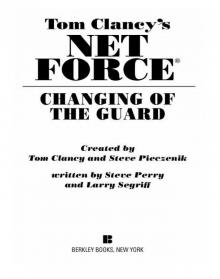 Changing of the Guard
Changing of the Guard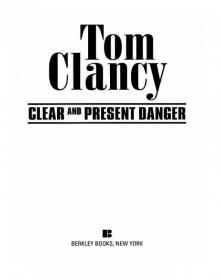 Clear and Present Danger
Clear and Present Danger Hounds of Rome
Hounds of Rome Breaking Point
Breaking Point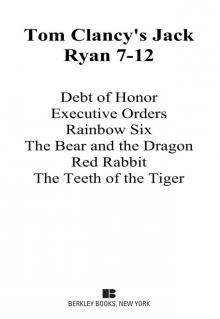 Tom Clancy's Jack Ryan Books 7-12
Tom Clancy's Jack Ryan Books 7-12 Full Force and Effect
Full Force and Effect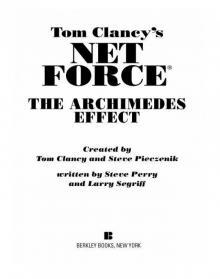 The Archimedes Effect
The Archimedes Effect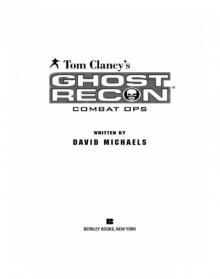 Combat Ops
Combat Ops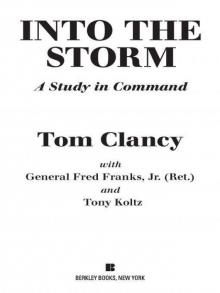 Into the Storm: On the Ground in Iraq
Into the Storm: On the Ground in Iraq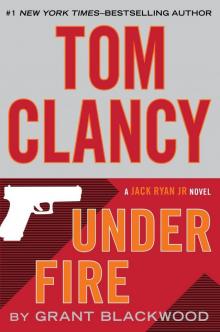 Under Fire
Under Fire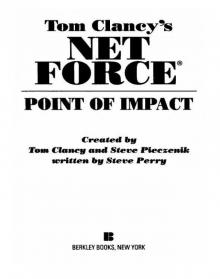 Point of Impact
Point of Impact Red Rabbit
Red Rabbit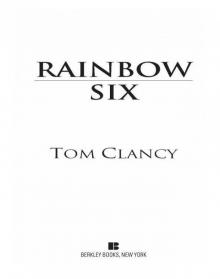 Rainbow Six
Rainbow Six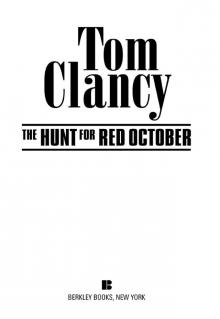 The Hunt for Red October
The Hunt for Red October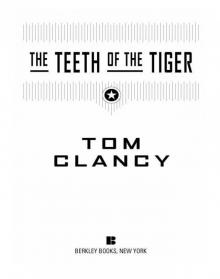 The Teeth of the Tiger
The Teeth of the Tiger Conviction (2009)
Conviction (2009)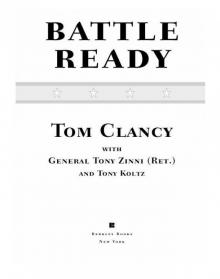 Battle Ready
Battle Ready Patriot Games
Patriot Games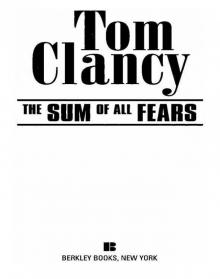 The Sum of All Fears
The Sum of All Fears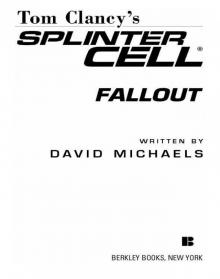 Fallout (2007)
Fallout (2007)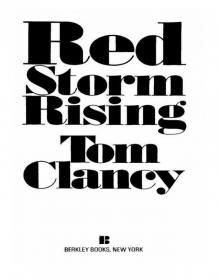 Red Storm Rising
Red Storm Rising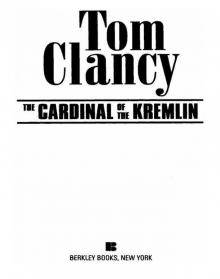 The Cardinal of the Kremlin
The Cardinal of the Kremlin Executive Orders
Executive Orders Lincoln, the unknown
Lincoln, the unknown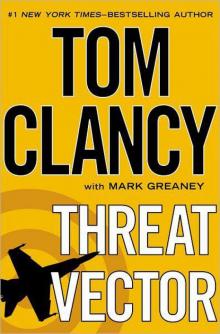 Threat Vector
Threat Vector The Hunted
The Hunted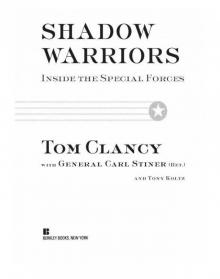 Shadow Warriors: Inside the Special Forces
Shadow Warriors: Inside the Special Forces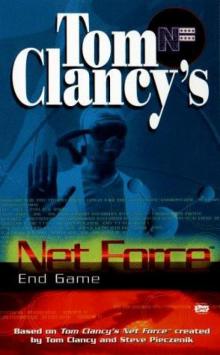 End Game
End Game Special Forces: A Guided Tour of U.S. Army Special Forces
Special Forces: A Guided Tour of U.S. Army Special Forces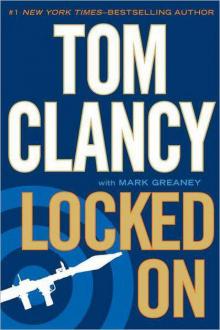 Locked On
Locked On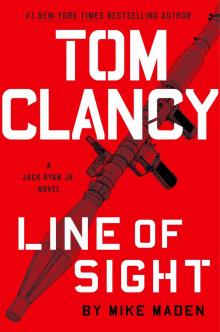 Line of Sight
Line of Sight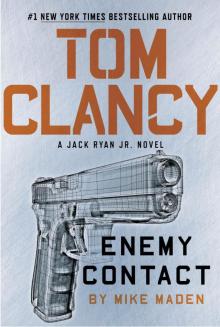 Tom Clancy Enemy Contact - Mike Maden
Tom Clancy Enemy Contact - Mike Maden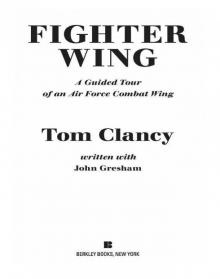 Fighter Wing: A Guided Tour of an Air Force Combat Wing
Fighter Wing: A Guided Tour of an Air Force Combat Wing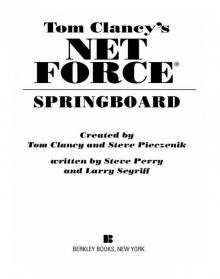 Springboard
Springboard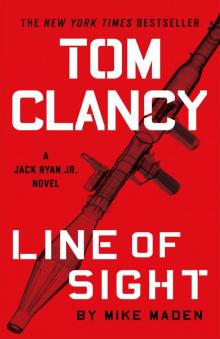 Line of Sight - Mike Maden
Line of Sight - Mike Maden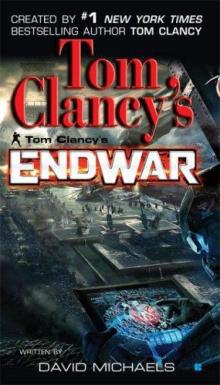 EndWar
EndWar Dead or Alive
Dead or Alive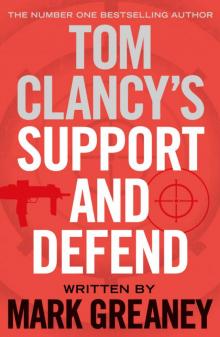 Tom Clancy Support and Defend
Tom Clancy Support and Defend Checkmate
Checkmate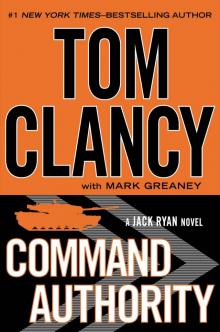 Command Authority
Command Authority Carrier: A Guided Tour of an Aircraft Carrier
Carrier: A Guided Tour of an Aircraft Carrier Blacklist Aftermath
Blacklist Aftermath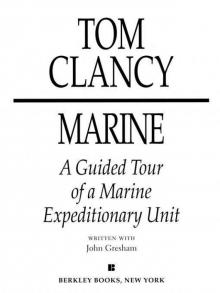 Marine: A Guided Tour of a Marine Expeditionary Unit
Marine: A Guided Tour of a Marine Expeditionary Unit Commander-In-Chief
Commander-In-Chief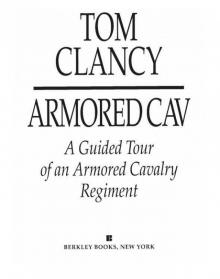 Armored Cav: A Guided Tour of an Armored Cavalry Regiment
Armored Cav: A Guided Tour of an Armored Cavalry Regiment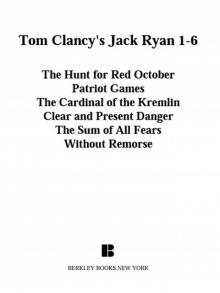 Tom Clancy's Jack Ryan Books 1-6
Tom Clancy's Jack Ryan Books 1-6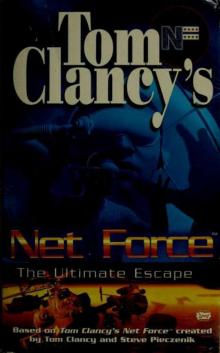 The Ultimate Escape
The Ultimate Escape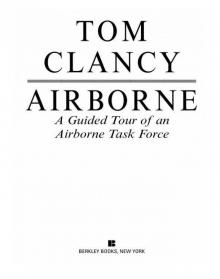 Airborne: A Guided Tour of an Airborne Task Force
Airborne: A Guided Tour of an Airborne Task Force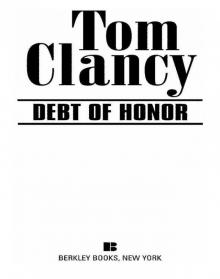 Debt of Honor
Debt of Honor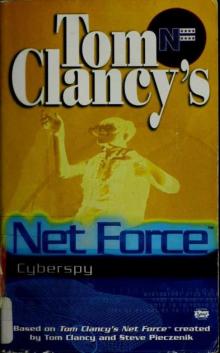 Cyberspy
Cyberspy Point of Contact
Point of Contact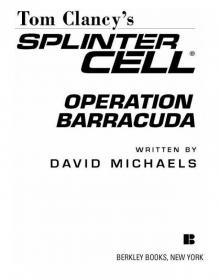 Operation Barracuda (2005)
Operation Barracuda (2005)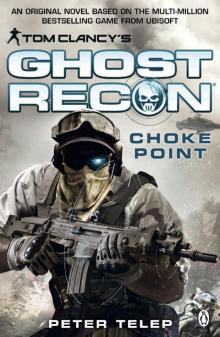 Choke Point
Choke Point Power and Empire
Power and Empire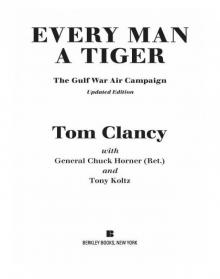 Every Man a Tiger: The Gulf War Air Campaign
Every Man a Tiger: The Gulf War Air Campaign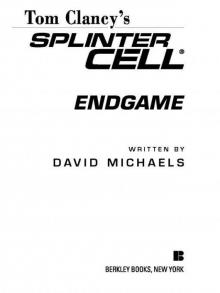 Endgame (1998)
Endgame (1998)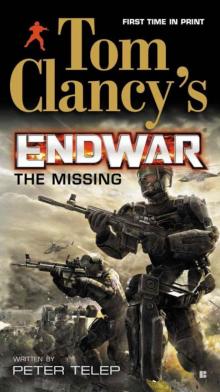 EndWar: The Missing
EndWar: The Missing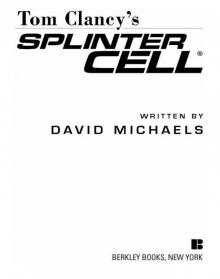 Splinter Cell (2004)
Splinter Cell (2004) The Great Race
The Great Race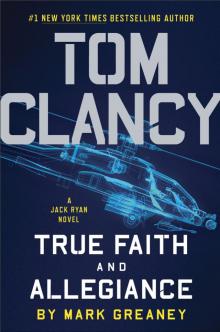 True Faith and Allegiance
True Faith and Allegiance Deathworld
Deathworld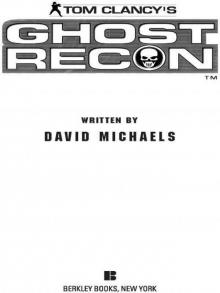 Ghost Recon (2008)
Ghost Recon (2008) Duel Identity
Duel Identity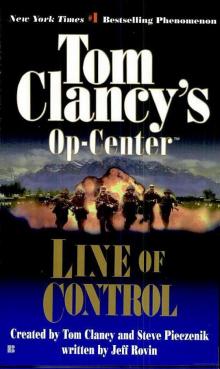 Line of Control o-8
Line of Control o-8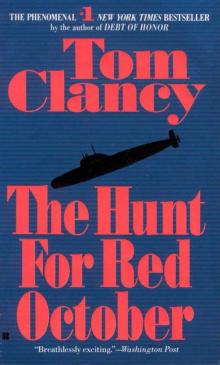 The Hunt for Red October jr-3
The Hunt for Red October jr-3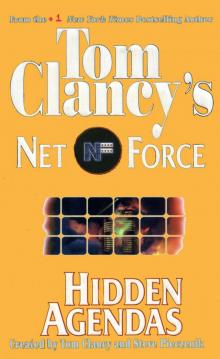 Hidden Agendas nf-2
Hidden Agendas nf-2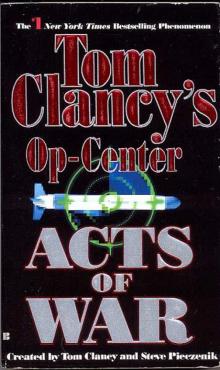 Acts of War oc-4
Acts of War oc-4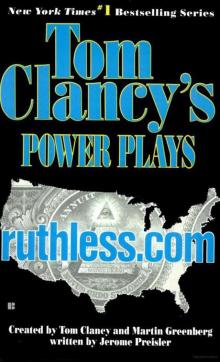 Ruthless.Com pp-2
Ruthless.Com pp-2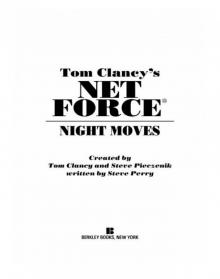 Night Moves
Night Moves The Hounds of Rome - Mystery of a Fugitive Priest
The Hounds of Rome - Mystery of a Fugitive Priest Into the Storm: On the Ground in Iraq sic-1
Into the Storm: On the Ground in Iraq sic-1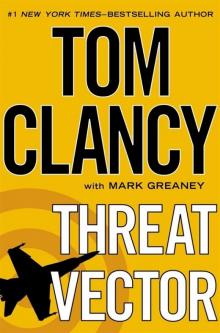 Threat Vector jrj-4
Threat Vector jrj-4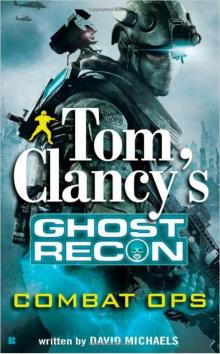 Combat Ops gr-2
Combat Ops gr-2 Virtual Vandals nfe-1
Virtual Vandals nfe-1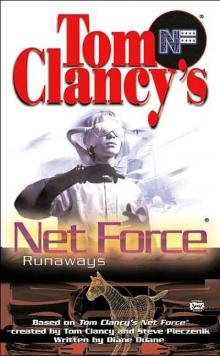 Runaways nfe-16
Runaways nfe-16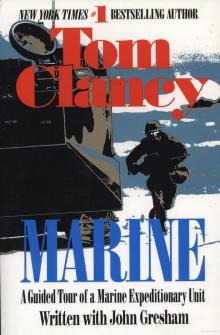 Marine: A Guided Tour of a Marine Expeditionary Unit tcml-4
Marine: A Guided Tour of a Marine Expeditionary Unit tcml-4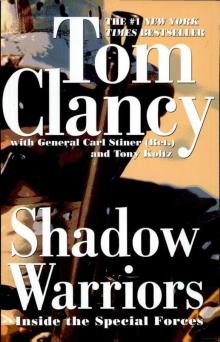 Shadow Warriors: Inside the Special Forces sic-3
Shadow Warriors: Inside the Special Forces sic-3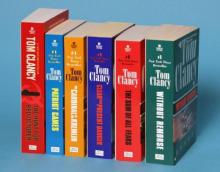 Jack Ryan Books 1-6
Jack Ryan Books 1-6 Cold Case nfe-15
Cold Case nfe-15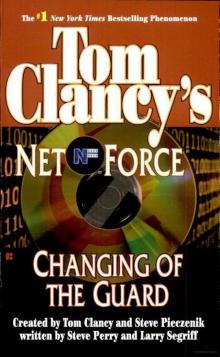 Changing of the Guard nf-8
Changing of the Guard nf-8 Splinter Cell sc-1
Splinter Cell sc-1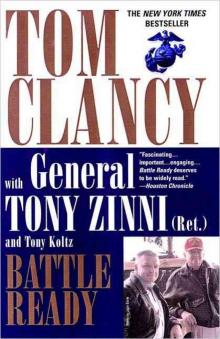 Battle Ready sic-4
Battle Ready sic-4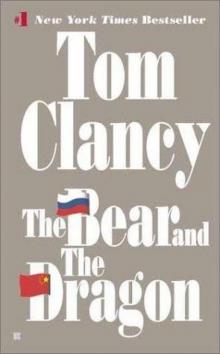 The Bear and the Dragon jrao-11
The Bear and the Dragon jrao-11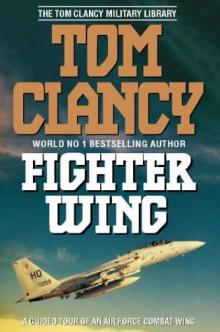 Fighter Wing: A Guided Tour of an Air Force Combat Wing tcml-3
Fighter Wing: A Guided Tour of an Air Force Combat Wing tcml-3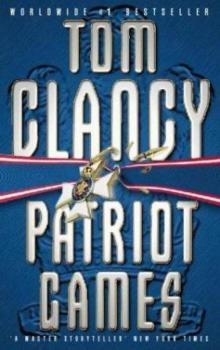 Patriot Games jr-1
Patriot Games jr-1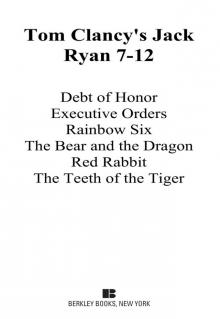 Jack Ryan Books 7-12
Jack Ryan Books 7-12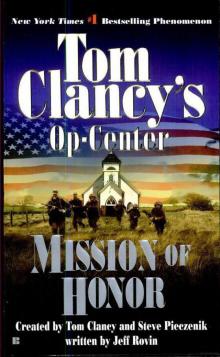 Mission of Honor o-9
Mission of Honor o-9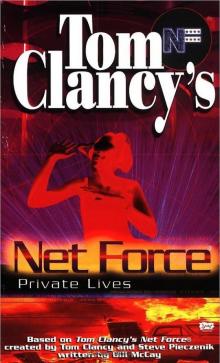 Private Lives nfe-9
Private Lives nfe-9 Operation Barracuda sc-2
Operation Barracuda sc-2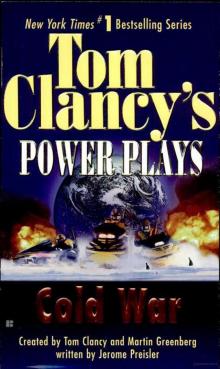 Cold War pp-5
Cold War pp-5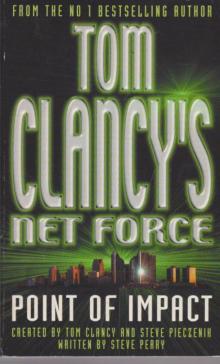 Point of Impact nf-5
Point of Impact nf-5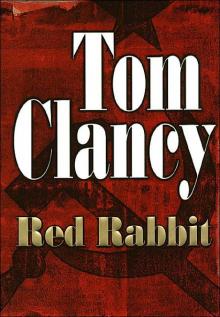 Red Rabbit jr-9
Red Rabbit jr-9 The Deadliest Game nfe-2
The Deadliest Game nfe-2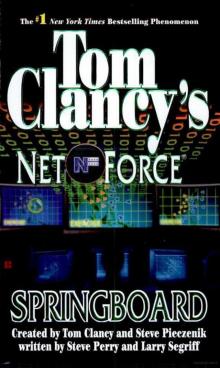 Springboard nf-9
Springboard nf-9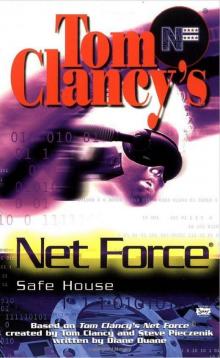 Safe House nfe-10
Safe House nfe-10 EndWar e-1
EndWar e-1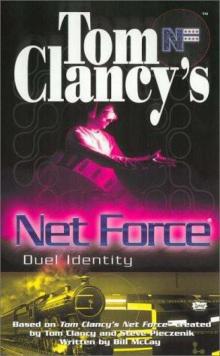 Duel Identity nfe-12
Duel Identity nfe-12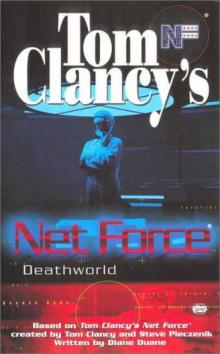 Deathworld nfe-13
Deathworld nfe-13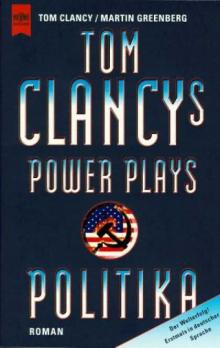 Politika pp-1
Politika pp-1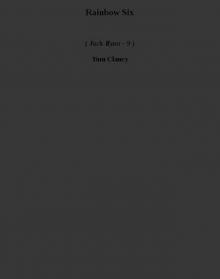 Rainbow Six jr-9
Rainbow Six jr-9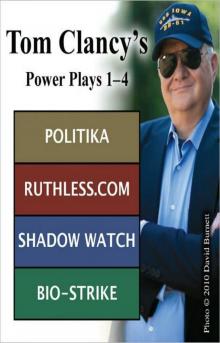 Tom Clancy's Power Plays 1 - 4
Tom Clancy's Power Plays 1 - 4 Endgame sc-6
Endgame sc-6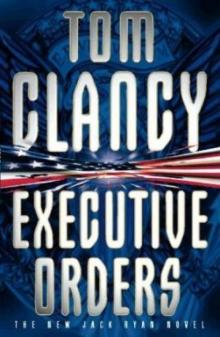 Executive Orders jr-7
Executive Orders jr-7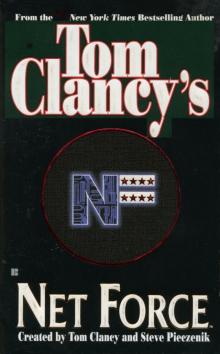 Net Force nf-1
Net Force nf-1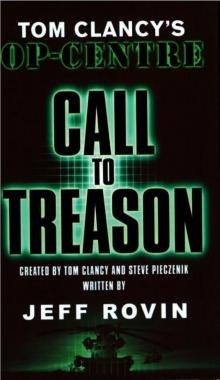 Call to Treason o-11
Call to Treason o-11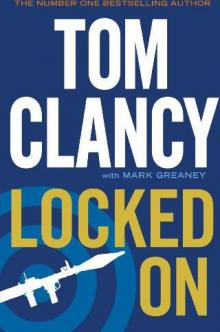 Locked On jrj-3
Locked On jrj-3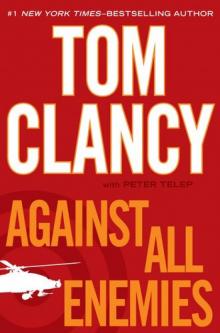 Against All Enemies
Against All Enemies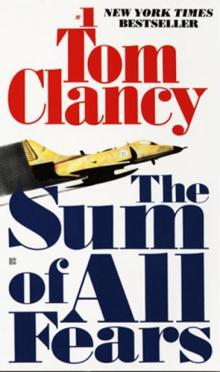 The Sum of All Fears jr-7
The Sum of All Fears jr-7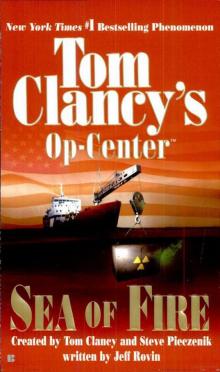 Sea of Fire o-10
Sea of Fire o-10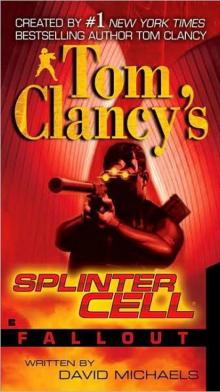 Fallout sc-4
Fallout sc-4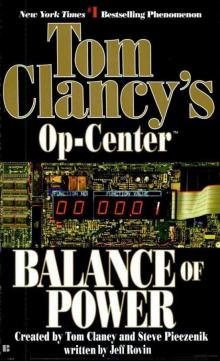 Balance of Power o-5
Balance of Power o-5 Shadow Watch pp-3
Shadow Watch pp-3 State of War nf-7
State of War nf-7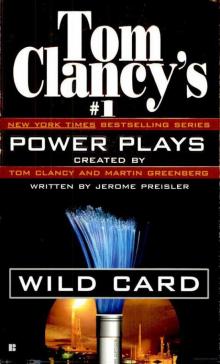 Wild Card pp-8
Wild Card pp-8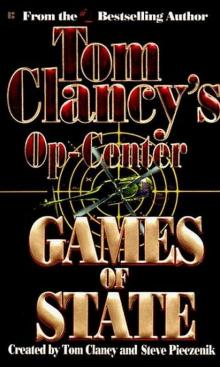 Games of State o-3
Games of State o-3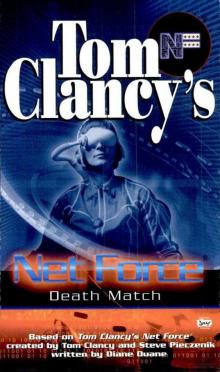 Death Match nfe-18
Death Match nfe-18 Against All Enemies mm-1
Against All Enemies mm-1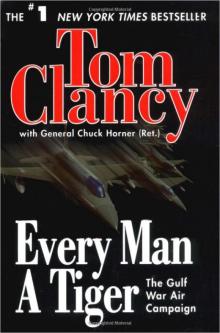 Every Man a Tiger: The Gulf War Air Campaign sic-2
Every Man a Tiger: The Gulf War Air Campaign sic-2 Cybernation nf-6
Cybernation nf-6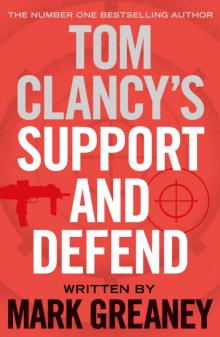 Support and Defend
Support and Defend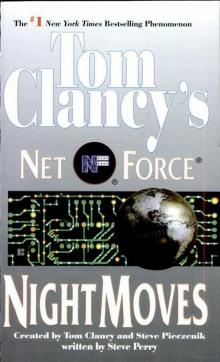 Night Moves nf-3
Night Moves nf-3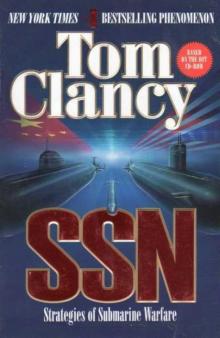 SSN
SSN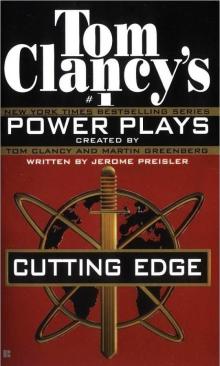 Cutting Edge pp-6
Cutting Edge pp-6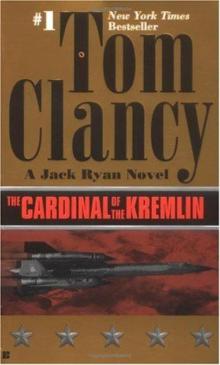 The Cardinal of the Kremlin jrao-5
The Cardinal of the Kremlin jrao-5 War of Eagles o-12
War of Eagles o-12 Op-Center o-1
Op-Center o-1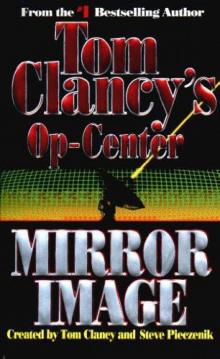 Mirror Image o-2
Mirror Image o-2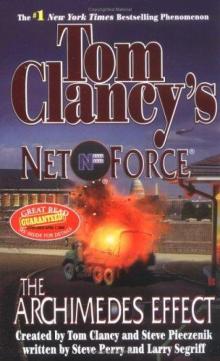 The Archimedes Effect nf-10
The Archimedes Effect nf-10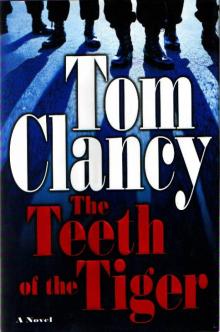 Teeth of the Tiger jrj-1
Teeth of the Tiger jrj-1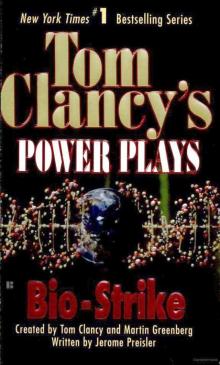 Bio-Strike pp-4
Bio-Strike pp-4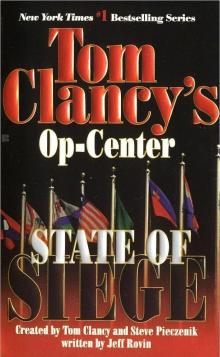 State of Siege o-6
State of Siege o-6 Debt of Honor jr-6
Debt of Honor jr-6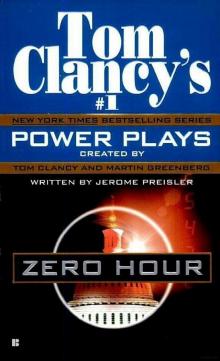 Zero Hour pp-7
Zero Hour pp-7 Ghost Recon gr-1
Ghost Recon gr-1 Command Authority jr-10
Command Authority jr-10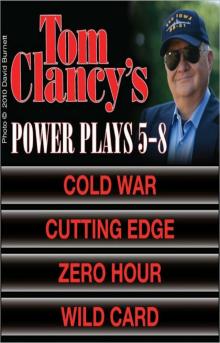 Tom Clancy's Power Plays 5 - 8
Tom Clancy's Power Plays 5 - 8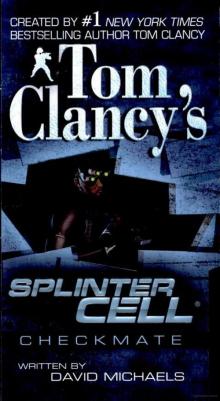 Checkmate sc-3
Checkmate sc-3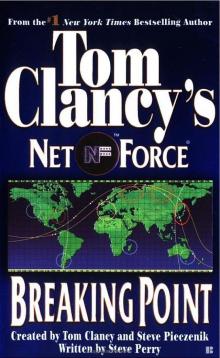 Breaking Point nf-4
Breaking Point nf-4 Gameprey nfe-11
Gameprey nfe-11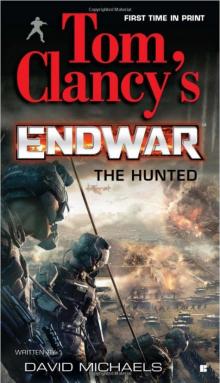 The Hunted e-2
The Hunted e-2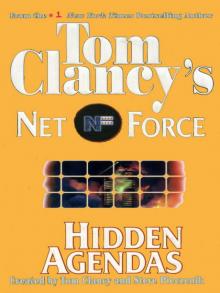 Hidden Agendas
Hidden Agendas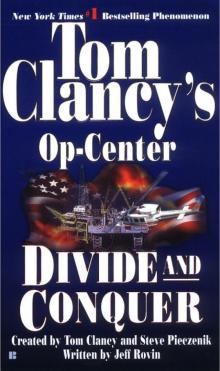 Divide and Conquer o-7
Divide and Conquer o-7